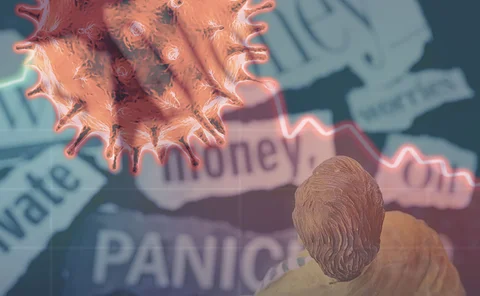Credit risk
Counterparty credit risk – Why data is only valuable in context
Paul Whitmore, global head of counterparty risk solutions at Fitch Solutions, explains how qualitative data can add colour and insight to quantitative metrics for assessing the creditworthiness of counterparty banks
US life insurers exposed to $130bn of CMBS
Majority of exposures are to senior tranches
Quants warn on credit risk in stocks
Conventional models may be missing explosion in novel exposure
Sluggish back-office systems added to margin pressures
Systems supplied by FIS struggled to handle massive spike in March trading volumes
Current expected credit loss procyclicality: it depends on the model
This work looks at a wide range of models to test the degree to which CECL is procyclical for different types of model.
A sensitivity analysis of the alpha factor
In this paper, we investigate the alpha factor’s sensitivity to key model parameters under stylized portfolio assumptions in order to better understand its complex characteristics. Our analysis is based on the numerical simulation of alpha sensitivities…
Local banks’ CDSs chase Italy’s sovereign risk higher
MPS and Banco BPM creditworthiness lags Italy’s
As Covid snaps credit models, lenders turn to stress-testing
Banks enlist scenario analysis to bolster creaking default models
UK bank ECL scenarios may lowball coronavirus impact
BoE offers IFRS 9 relief on virus-hit loans
Credit risk – Building on a foundation of quality data
Credit risk analysts at emerging market banks not only need high-quality data, but also the necessary tools to manage it. Improving consistency and reducing the risk of errors in credit risk data create more time to concentrate on the core activity of…
Operational uncertainty – An unavoidable challenge
The transition from Libor to a new risk-free rate has revealed a number of challenges for all financial markets participants – the nature and scope of what lies ahead is vast, impacting businesses, operations and support functions. KPMG‘s global Libor…
CECL working as intended amid Covid-19 crisis, says FASB
Suspending new standard would be a decision for regulators, not accountants, say observers
CECL muddies stress tests for US banks
Accounting forecasts differ from Fed’s CCAR scenarios; banks seek middle way to avoid upfront capital hit
Credit data: rising tide lifts fund houses – but can it last?
Strong revenue growth masks structural problems in the funds industry
Barclays used securitisations as credit risk shield in 2019
Risk-weighted assets for these exposures increased 44%
CDX on junk bonds jumped 65% in H1 2019
Notionals to which CCPs were counterparty increased +85%
Treasurers turn to AI in bid for sharper forecasting
Wider automation could usher in future of ‘hands-free hedging’, but obstacles lurk in data standards and sharing
Credit impairment charge up 22% at StanChart
Higher provisions taken, even as number of stage three loans drops
Quantifying systemic risk using Bayesian networks
Creditworthiness of individual entities may offer an insight into systemic risk of financial markets
ICAAP/ILAAP – Unlocking business value from capital and liquidity assessment
Regulators consider banks’ internal capital adequacy and assessment process (ICAAP) and internal liquidity adequacy assessment process (ILAAP) important tools in managing risk. The European Central Bank’s (ECB’s) updated guidance – which came into effect…
Clearing members in cash clash with Apac CCPs
Banks and clearing houses wrangle over who should pay for losses on invested collateral
CECL models may leave banks ill-prepared for next downturn
Mortgage backtest study shows some loan-loss models miss the mark
HSBC to reallocate $100bn of RWAs in shake-up
Global banking and markets division to take brunt of cuts

















